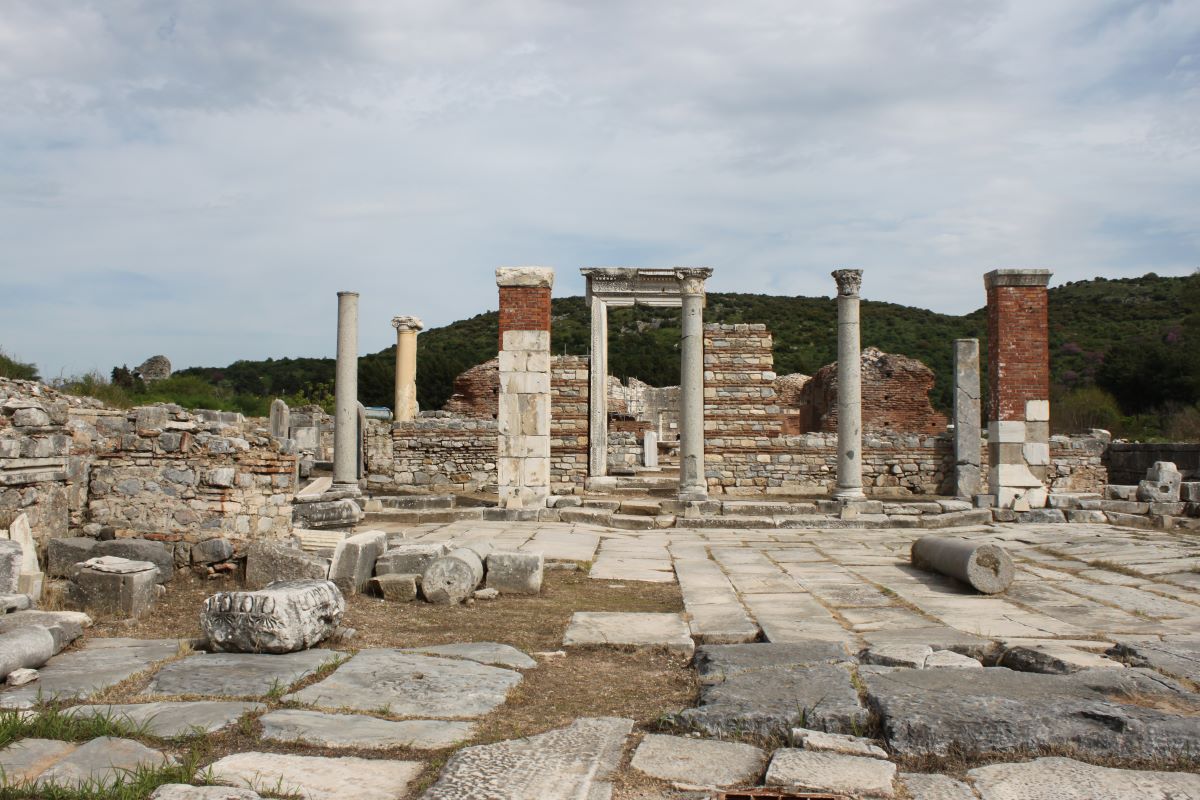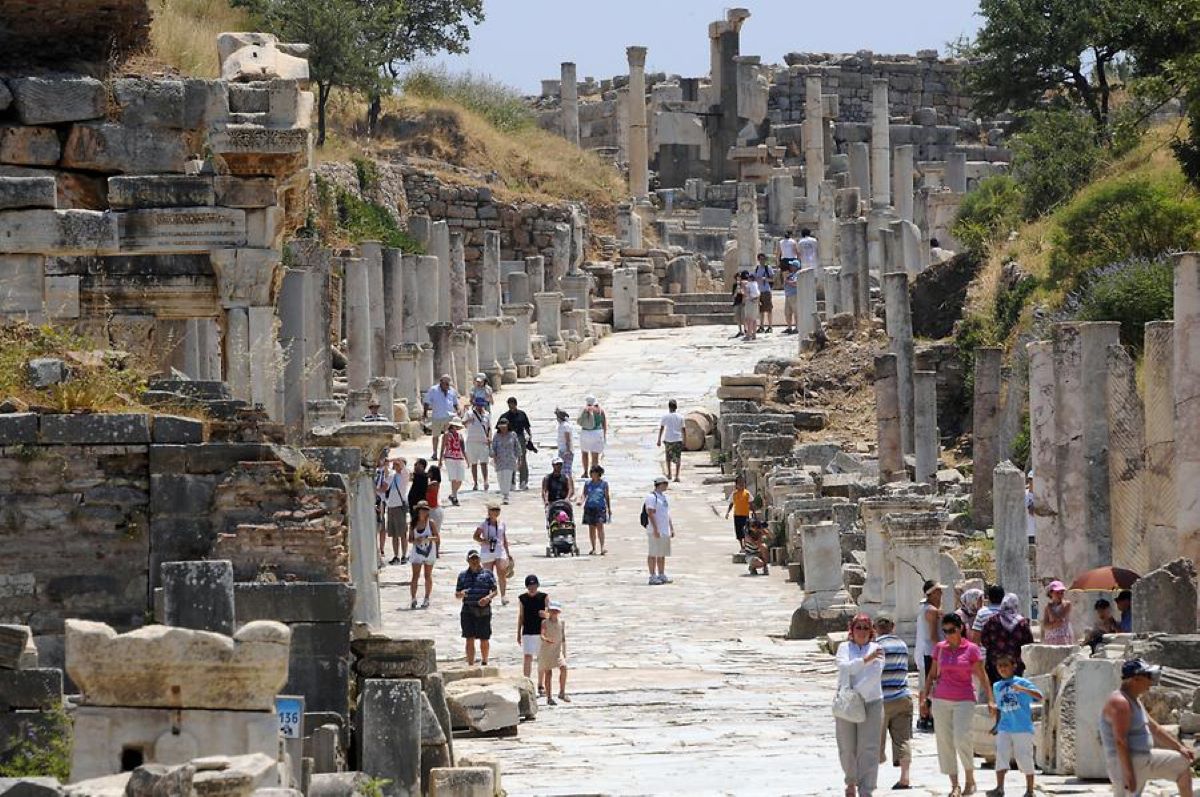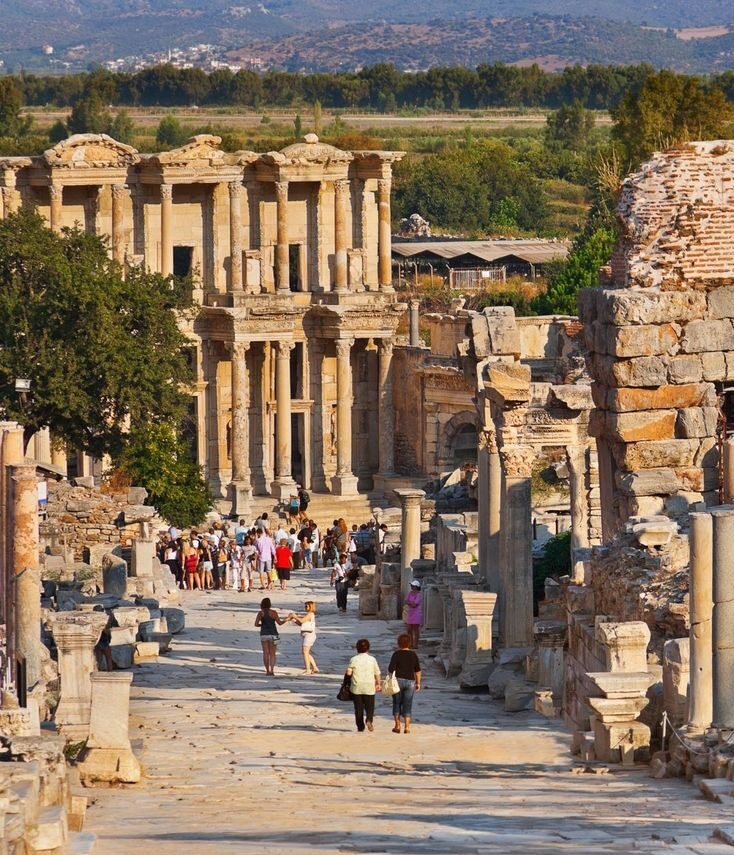The ancient city of Ephesus is a site of remarkable historical significance, with a…

The Church of Virgin Mary: A Fascinating Historical Site in Ephesus
Ephesus has a rich history dating back to the 10th century BCE. Over the centuries, Ephesus has been ruled by various empires and has been an important center of trade, culture, and religion. One of the most significant religious sites in Ephesus is the Church of Virgin Mary.
The first-ever church dedicated to the mother of Christ was built in the 3rd century CE and remains the most important building from Christian times in Ephesus. It was constructed within an earlier building that was clearly related to the pagan cults of the city’s past. The Church of the Virgin Mary is a basilica with a nave and two aisles that were divided into shorter parts serving as shops. The best-preserved section of the structure is a cylindrical baptistery that had a pool in the central part where the baptized people could be fully immersed in water. The church hosted the third ecumenical council, also known as the Council of Ephesus, in 431. The council established an extraordinary theological relationship between Mary and Christ, choosing the title of Mary as the Mother of God.
Over time, the Church of Mary was replaced by a new basilica, which was built into the space of the old church. The new church had two additional rows of columns supporting the roof and was reconstructed with walled-up arcades. Eventually, the whole structure collapsed and was turned into a cemetery. The baptistery is the best-preserved part of the church today, and ongoing reconstruction efforts are underway.
The building to the east of the Church of St. Mary was possibly the seat of the bishop and is known as the Byzantine Palace. This spacious residence consisted of a large bath complex of several rooms and a latrine to the north, a colonnaded courtyard, and a prestigious southern wing with grand reception rooms and audience chambers. Later, a chapel was added to the complex, and a cemetery developed around it. The residence was remodeled under suspicious circumstances by Bishop Antonius, who redecorated his dining room with columns taken from the Church of Mary and equipped his bath with marbles from the baptistery. He was deposed from office in 400.
The area surrounding the Church of the Virgin Mary is full of other notable buildings and structures. One of the most significant is the Byzantine Palace, located to the east of the church. This large residence, which covers an impressive 3,750 square meters, is believed to have been the seat of the bishop or episkopeion. The complex features a large bath with several rooms and a latrine to the north, a colonnaded courtyard measuring 14 by 8.5 meters, and a prestigious southern wing with grand reception rooms and audience chambers. Later, a chapel was added to the complex, and a cemetery developed around it.
There is a peculiar legend associated with the palace’s history, which involves its resident, Bishop Antonius. According to local lore, Antonius redecorated his dining room with columns taken from the Church of Mary, and he even used marbles from the baptistery to equip his bath. This act of sacrilege led to his deposition from office in the year 400.
In addition to the Byzantine Palace, there are several other buildings near the Church of Mary. To the west of the church is the Isabey Mosque, which was built in the 14th century using materials from the ruins of the Church of Mary. To the north of the church, there is a small bath that was erected in the northern colonnade of the atrium, with several rooms and a hypocaust system. It is believed that a significant part of the great church may have been transformed into a residential district, while a graveyard surrounded the church.
Despite the many rebuildings and transformations the Church of Mary has undergone, the cylindrical baptistery located in the northern part of the atrium remains the best-preserved part of the structure. In the central part of the baptistery, there is a pool where the baptized people could be fully immersed in water. Reconstruction efforts are ongoing in the baptistery, and as of 2019, it was closed to the public.
In conclusion, the Church of the Virgin Mary is a significant building from Christian times in Ephesus. It was the first of churches dedicated to the mother of Christ and played an important role in the third ecumenical council, known as the Council of Ephesus. Although the church has undergone many transformations and rebuildings, the cylindrical baptistery remains the best-preserved part of the structure. The surrounding area is full of other notable buildings and structures, including the Byzantine Palace, the Isabey Mosque, and a small bath located to the north of the church. Despite the confusion resulting from the many rebuildings and transformations, the Church of Mary is a fascinating historical site and a must-visit for anyone interested in the history of Christianity.



This Post Has 0 Comments